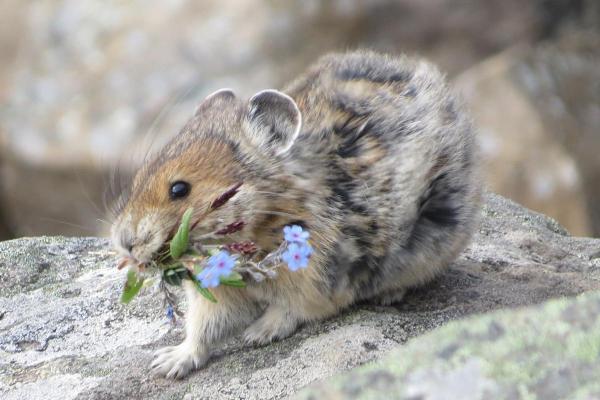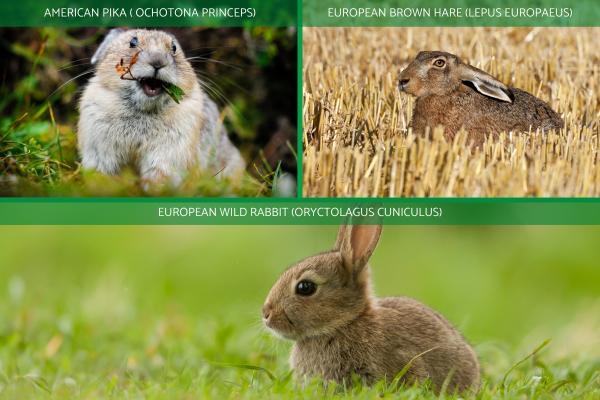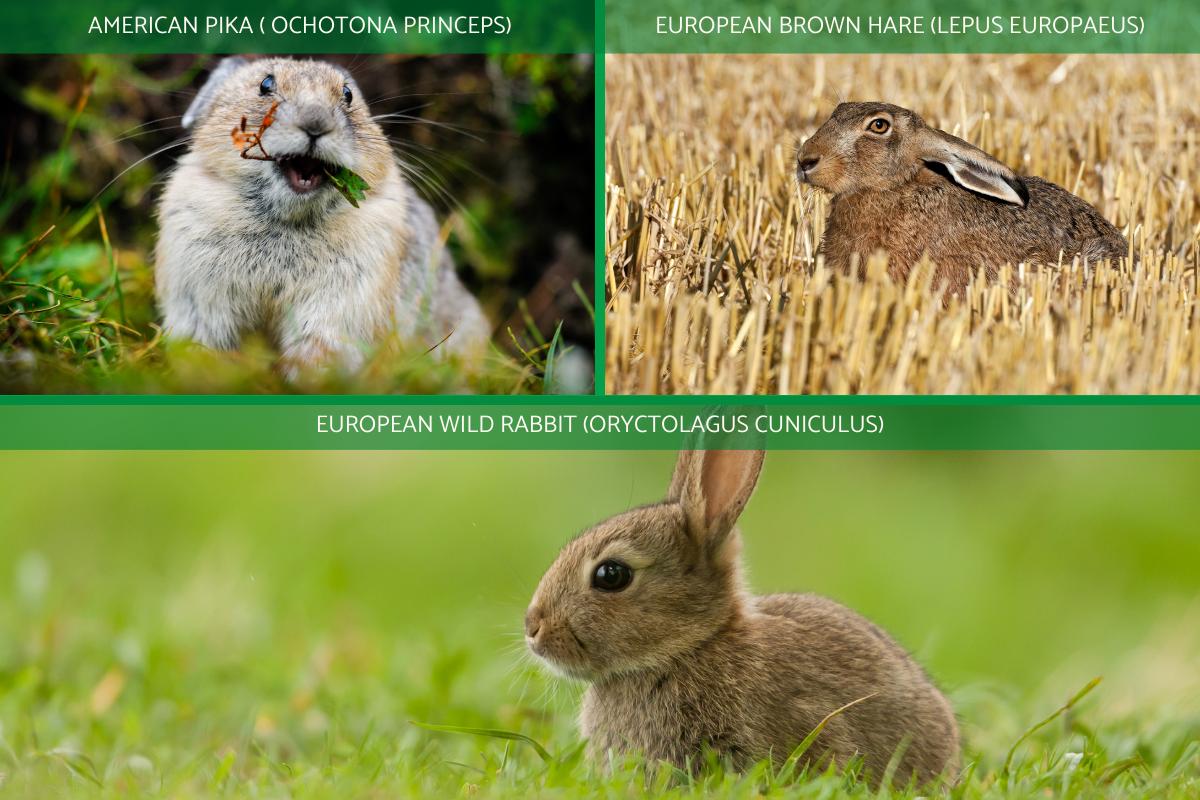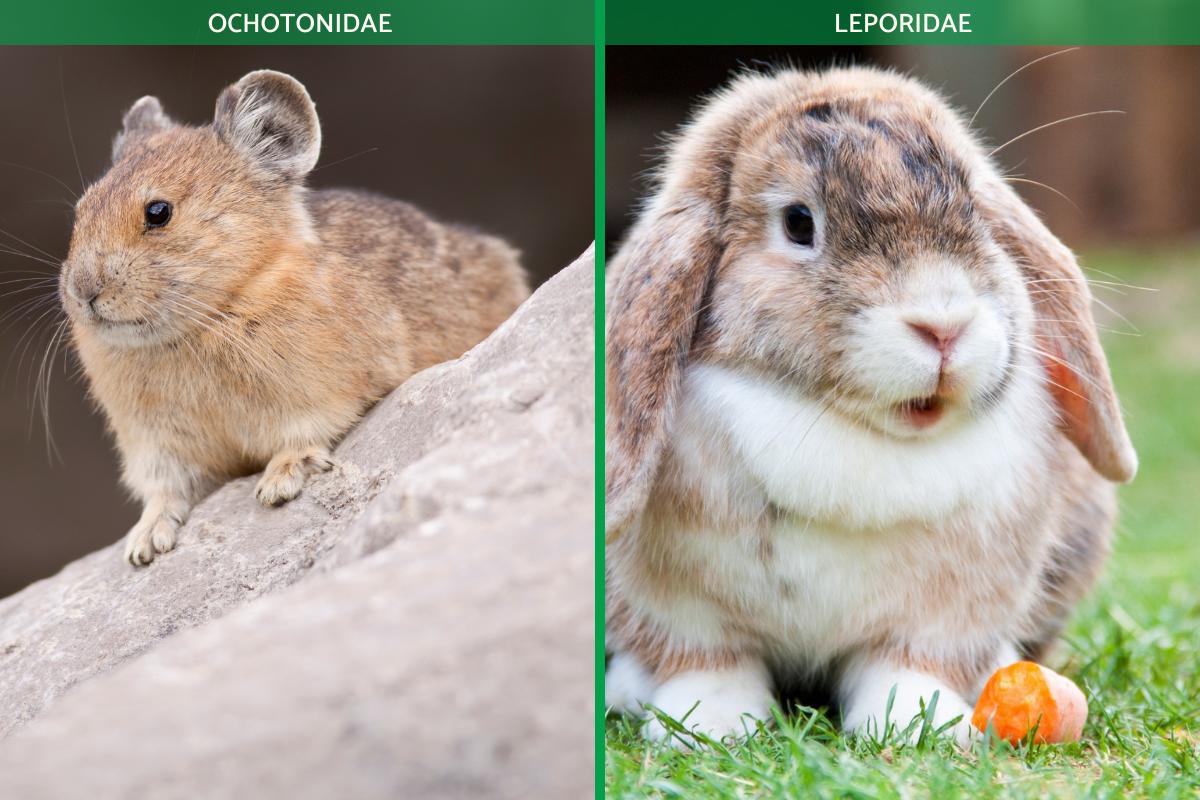What Are Lagomorphs?


If you've ever watched a rabbit bounding across a meadow or heard the sharp call of a pika echoing through the mountains, you've encountered members of one of nature’s most fascinating mammal orders: the lagomorphs. Though often mistaken for rodents, these unique creatures that include rabbits, hares, and pikas have their own evolutionary story, one that has shaped them into some of the most adaptable herbivores on Earth.
In the following article by thedailyECO, we explore what lagomorphs are, their main characteristics, and how they differ from rodents.
What are lagomorphs and their characteristics
Lagomorphs, a group of mammals that includes rabbits, hares, and pikas, are well-adapted herbivores found in a variety of environments worldwide.
These medium-sized animals are known for their long ears, strong hind legs, and short tails. Their powerful back limbs help them leap and quickly change direction, making it easier to escape predators. They also have thick fur that provides insulation, and both their front and back feet have four toes each.
One of the most distinctive features of lagomorphs is their teeth. They have two pairs of upper incisors, with the second pair positioned right behind the first. These incisors never stop growing, so they must be continuously worn down through chewing. Unlike many other mammals, they lack canine teeth. Instead, they have a gap called a diastema between their incisors and cheek teeth, which are specialized for grinding plant material.
Lagomorphs have a unique digestive system that helps them maximize nutrition from their plant-based diet. They practice cecotrophy, which essentially means eating their own soft feces, to reabsorb essential nutrients produced by bacteria in their gut. This process allows them to extract more energy and stay healthy.
These animals thrive in a wide range of habitats, from arctic tundras to deserts and high-altitude regions. Depending on the species, they can be active during the day, at dawn and dusk, or at night. Their survival is aided by keen senses, especially sharp hearing, excellent vision, and a strong sense of smell.
Lagomorphs are also highly prolific breeders. They can reproduce year-round in favorable conditions, and females are often larger than males. Their offspring, particularly those of hares, are born well-developed, with fur and the ability to move soon after birth.
Examples of lagomorphs
The order Lagomorpha includes 93 species spread across two distinct families: Ochotonidae (pikas) and Leporidae (rabbits and hares).
These species exhibit a variety of adaptations to different environments and lifestyles, making them an ecologically significant and diverse group of mammals. Let us take a closer look at each one:
1. Ochotonidae (Pikas):
This family is made up of a single genus, Ochotona, which contains 30 species. Pikas are small, compact animals with rounded ears and no visible tail. They are particularly well-adapted to cold climates and high-altitude habitats.
Let's examine the characteristics of the American pika ( Ochotona princeps), a representative of this family.
- Distribution: found in mountainous regions of western North America.
- Habitat: rocky alpine areas and talus slopes, typically at elevations above 6,000 feet.
- Behavior: diurnal (active during the day), territorial, and monogamous.
- Adaptations: pikas store food in "haypiles" to sustain them during winter months.
- Size: small, weighing between 120-180 grams.
2. Leporidae (rabbits and hares):
This family, the larger of the two, includes 63 species across 11 genera, encompassing both rabbits and hares. Generally larger than pikas, they are known for their long ears and distinctive behaviors.
Let's examine the characteristics of the European Brown Hare (Lepus europaeus), a representative of this family.
- Distribution: native to Europe and parts of Asia.
- Habitat: open grasslands, agricultural fields, and forest edges.
- Behavior: primarily nocturnal and solitary.
- Adaptations: powerful hind legs enable rapid movement for evading predators.
- Size: Large, weighing between 3-4 kg.
And now, let's compare it to the European Wild Rabbit (Oryctolagus cuniculus):
- Distribution: originally from southwestern Europe, now found worldwide.
- Habitat: prefers soft soil areas for burrowing, including grasslands, forests, and farmland.
- Behavior: social creatures that live in warren-based colonies.
- Social structure: complex hierarchical groups with dominant males.
- Size: medium, weighing between 1.3-2.2 kg.

Key differences between Ochotonidae and Leporidae
As mentioned earlier, Lagomorphs are divided into two distinct families Ochotonidae (pikas) and Leporidae (rabbits and hares) and each with unique characteristics that set them apart.
In terms of size and body shape, pikas are small and compact, with short limbs and no visible tail. In contrast, members of the Leporidae family tend to be larger, with elongated bodies, long ears, and a visible tail.
Their habitat preferences also differ. Pikas are typically found in high-altitude, rocky environments such as alpine slopes, where they rely on crevices for shelter. Leporids, on the other hand, are highly adaptable and can thrive in diverse environments, from grasslands and forests to agricultural fields.
When it comes to behavior, pikas are primarily diurnal, meaning they are active during the day. They are also territorial and tend to form monogamous pairs. Leporids, however, are mostly crepuscular or nocturnal, with social structures that vary widely, as some species are solitary, while others live in complex colonies.
Reproduction further distinguishes these two families. Pikas generally have smaller litters and maintain monogamous pair bonds. In contrast, leporids often reproduce at a much faster rate, with larger litters and a more polygamous breeding system.
This diversity within the lagomorph order demonstrates how these animals have evolved to occupy a variety of ecological niches, from high mountain slopes to open plains. Their differences in size, behavior, and habitat preferences reflect their adaptability and ecological significance.
What is the difference between a lagomorph and a rodent?
At first glance, lagomorphs and rodents might seem closely related. In fact, they were once classified together. However, modern science recognizes them as separate groups with distinct evolutionary histories. Here’s how they differ:
Teeth:
Both lagomorphs and rodents have ever-growing incisors, but lagomorphs have two pairs of upper incisors, with a small second pair tucked behind the front ones.
Rodents have only one pair of upper incisors. Additionally, lagomorphs have white teeth with enamel on both sides, while rodent incisors are often yellow or orange, with enamel only on the front.
Digestion:
Both groups eat plant-based diets, but lagomorphs have a unique strategy called cecotrophy where they produce special nutrient-rich fecal pellets and reingest them to maximize digestion. Some rodents may eat their own droppings, but they don’t have the same highly specialized system.
Face and mouth:
One standout feature of lagomorphs, especially rabbits and hares, is their split upper lip, often called a "harelip." This helps them manipulate food more efficiently. Rodents have different lip shapes but lack this distinctive split.
Reproductive anatomy:
A lesser-known difference is in their reproductive structures. Lagomorphs have their scrotum in front of the penis and lack a baculum (penis bone). In rodents, the scrotum is behind the penis, and most species do have a baculum.
Fur, ears, and tails:
Lagomorphs are fully covered in fur, including their legs and tails. They also have large ears that help regulate body temperature. Rodents vary widely in appearance, some have bare or sparsely furred tails and feet, and their ear size can differ significantly depending on the species.
Movement:
Lagomorphs are designed for jumping and leaping, with strong hind legs that allow them to escape predators quickly.
Rodents, however, show a wider range of movement styles, including climbing, swimming, digging, and scurrying.

Importance of lagomorphs
Lagomorphs have shaped ecosystems and human societies for millions of years. Originating around 45 million years ago in Eurasia and North America, these mammals continue to play a crucial role in both the natural world and cultural traditions.
Lagomorphs are an essential food source for many predators, including hawks, owls, foxes, wolves, and weasels. Their populations often influence the abundance of these predators, making them a cornerstone of many ecosystems.
As grazers, lagomorphs help control plant growth by feeding on grasses, herbs, bark, and young shoots. This natural trimming can support forest regeneration and maintain the balance of grassland ecosystems.
Burrowing rabbits create underground tunnels that provide shelter for other animals and improve soil health, water infiltration, and nutrient cycling. Their digging and movement patterns also introduce small disturbances that enhance habitat diversity.
Lagomorphs contribute to seed dispersal, unintentionally carrying seeds in their fur or spreading them through digestion. This helps plants grow in new areas and supports genetic diversity in plant populations.
Throughout history, lagomorphs have been an important source of protein for people worldwide. Their ability to reproduce quickly and efficiently convert plant material into food has made them valuable for subsistence hunting and commercial farming.
Think rabbits and hares are the same animal? You might be surprised! Hop over to our in-depth exploration of these unique lagomorphs to uncover their distinct characteristics.
If you want to read similar articles to What Are Lagomorphs?, we recommend you visit our Wild animals category.
- Camps J. (2000). Iberian Rabbit. Evolution and taxonomy of leporidae and the exclusive Iberian origin of wild and domestic rabbits . Available at: https://ddd.uab.cat/pub/jcamps/jcampsactpro/jcampsactpro_052.pdf
- Camps J. (sf). From the "alilepus" to the "cuniculus" . Available at: https://www.historiaveterinaria.org/update/origconi-1456742015.pdf
- Soriguer RC, Palacios F. (1996). The Iberian lagomorphs: hares and rabbits . Available at: https://www.researchgate.net/publication/256068496_LOS_LAGOMORFOS_IBERICOS_LIEBRES_Y_CONEJOS
- (sn). (sf). Understanding and preserving Mexican lagomorphs. Ecofronteras 22-25. Available at: file:///C:/Users/user/Downloads/753-Texto%20del%20art%C3%ADculo-786-1-10-20131129.pdf







